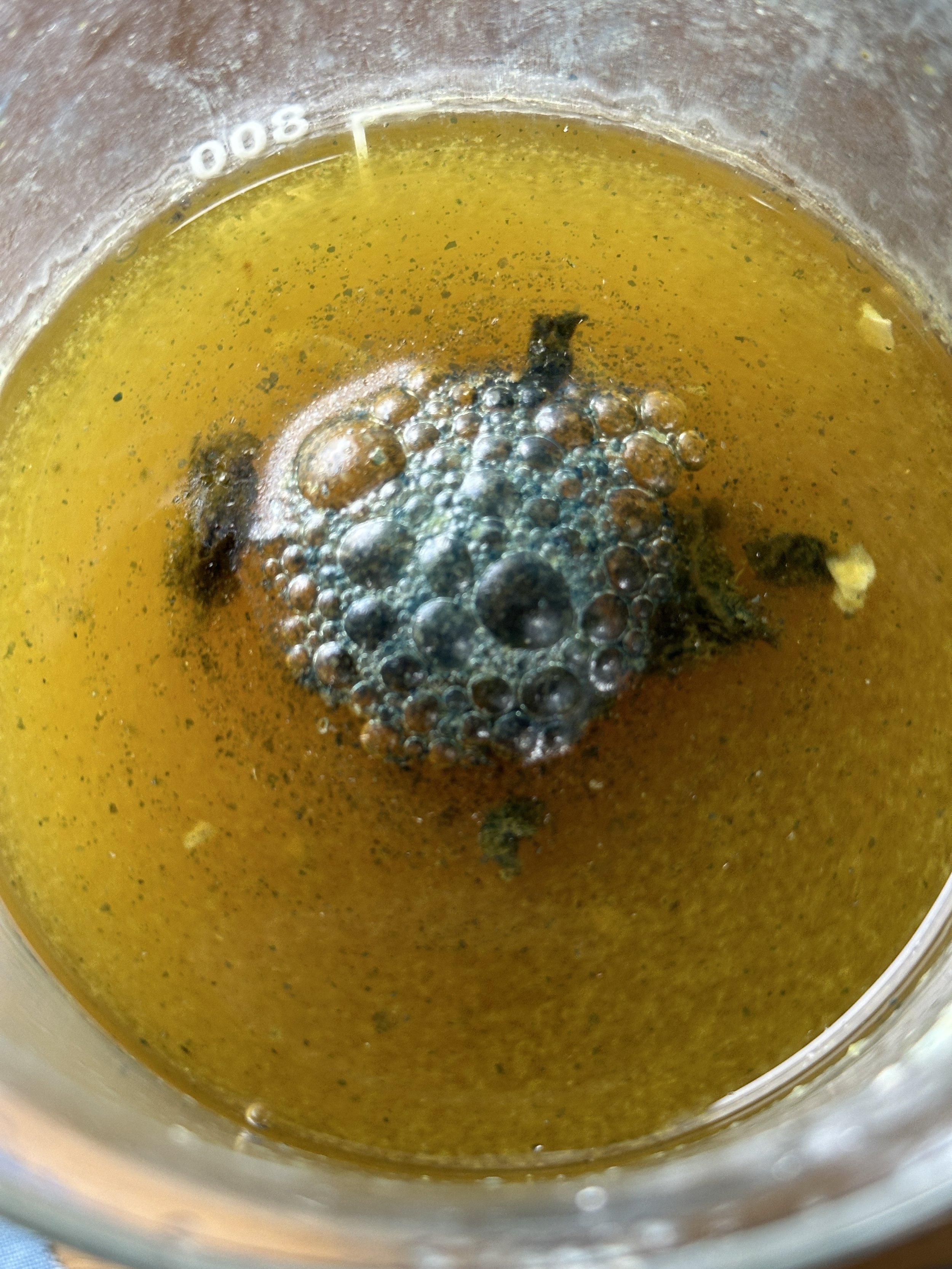Using Indigo leaves for further pigment extraction post Water extraction.

The reason why I choose to make Sukumo instead of extracting the pigment by the water extraction method, was that it seemed to me that there to be pigment left in the leaves, surely, the amount of pigment released was proportional to the enzymes in the leaves, and this enzyme is easily broken down with heat and time, and with the variabilities in growing conditions maybe these would also be variable. I read the Fiber shed documents which compared the yields of pigment from Sukumo and from the water extraction method, and Sukumo came out 3.5 times higher, so I first thought why on earth isn’t everyone doing this instead, especially if at home you are growing small quantities, surely you want the most quantities. Then I realised that the fermentation vat that you use Sukumo in, isn’t straight forward, especially if you are not familiar with fermentation, it takes time to get going, quite often a week or a bit longer, and its kind of messy actually, you have compost in your vat, it can get sludgy but one the other hand, its like a living thing, like looking after as sourdough starter, you just kind of grow together, and after a while it becomes intuitive.
So… this is not for everyone I know that, but if you fancy some experimenting and extending the yield of your indigo plants you have worked hard on growing then this Is for you!
Deets: I’m using Persicaria tinctoria, Japanese indigo, as this grows well in the UK, and has grown well for me in Cheshire. I purchased my seeds from Bailiwick blue (highly recommended by the way for seeds and pigment) and grew a raised bed with it in, which I have harvested 3 times so far and its now the middle of Sept, I’ve probably had around 8 kilos of leaves in total, maybe a little less. I once cut the first time I fed with chicken manure, they seemed to like that and bounced right back, its been VERY wet this summer with little sunshine, this did not seem to matter too much to be honest, although it may have effected pigment levels, it has still all worked out really well.
I first did a water extraction, a cold one, by leaving the indigo soaking for about 48 hours to ferment until it reached the mermaid blues. Then extracted the pigment, once this was done I dried the leaves out on a tarp in the greenhouse, (I actually had already removed the stems before I started the water extraction, but if you haven’t done that already, remove them once the leaves are dry.
I then crushed the leaves, just a little and popped them in a pot with a lid, I sprayed them with water so the were damp popped the lid on and put them in a warm boiler room to aid the composting process, cold will work ok it might just take longer. If you get them too wet they will smell absolutely horrible, you can still use them (I’ve had success with this, actually really good success) however its not that pleasant to use hahahaha, but it does reduce in the vat super easily so..upsides and downsides haha)
It’s better to keep it moist and to get moldy growth rather than a Bacillus slimy growth, it should smell almost a little sweet like tea/tabacco, keep an eye on it and add water as needed, spraying is easier to not add to much. If it dries out, don’t worry too much, it will revive with water.
I tested after a week just to see if my theory was right, really too early because the leaves are not yet broken down enough, but it showed signs of pigment see below, this was just from a tiny teaspoon of compost as you can see the bubbles on the top have oxidised into blue. So my theory was correct, there is still plenty of pigment left in the leaves after the water extraction. It could be argued that perhaps I wasn’t as efficient as I could have been at the water extraction, but I did yeild a nice amount of pigment plus, i’m guessing on a. small scale, its always a bit variable.
